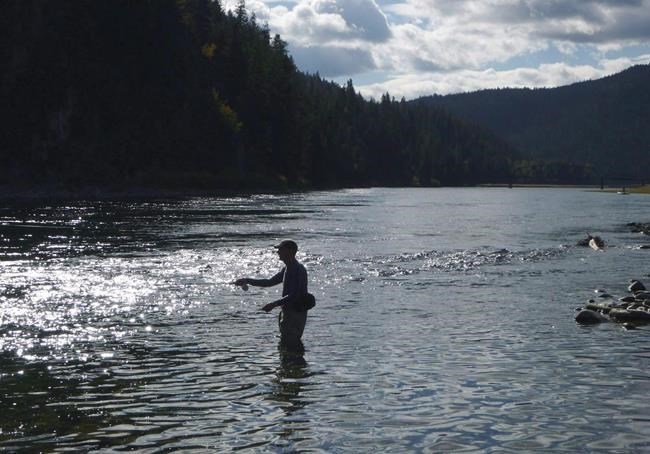The agency that mediates disputes between Canada and the United States over shared waters is pleading with the federal Liberals to join an investigation into contamination from British Columbia coal mines before the Americans move on their own.
In a May 13 letter, the International Joint Commission asked Prime Minister Justin Trudeau to commit Canada to collaborating with the U.S. on studying and finding a solution to selenium from Teck Resource's Elk Valley mines that ends up in rivers and lakes south of the border.
"We have heard from agencies, stakeholders, and Indigenous communities ... about their assessments that the problem is growing more critical," says the letter, addressed to both Trudeau and U.S. President Joe Biden. "We understand the United States government is discussing the merits of a unilateral reference to the (commission) on this matter.
"We believe it is in the best interests of all concerned if a joint reference were made to the (commission)."
A response from Global Affairs Canada was not immediately available.
The 100-year-old commission was founded to administer the 1909 Boundary Waters Treaty between the U.S. and Canada. Its job is to oversee projects that affect water flows across the border. A reference is how the commission investigates and seeks solutions.
Ottawa has already turned down one request for a reference into selenium in the Elk Valley from the Ktunaxa First Nation in B.C., made in December.
That decision outraged the Ktunaxa.
"We are stunned that Canada can, in this day of reconciliation and public vows by the Prime Minister to fully implement the UN Declaration, commit such a disrespectful act," said a May 6 letter from the First Nation to Foreign Affairs Minister Melanie Joly and Environment Minister Steven Guilbeault.
The commission warns the issue "is causing increasing conflict."
Montana and Idaho have set standards for allowable levels of selenium in their waters at 0.8 micrograms per litre. The letter says selenium levels are now 4.99 micrograms per litre in Lake Koocanusa and 1.4 in the Kootenai River, both of which lap against American shores.
"The selenium contamination, first identified more than three decades ago, has continued to worsen, with no significant binational co-operation to protect the water or aquatic and human life," the letter says.
While rarely harmful to humans, selenium can damage fish populations by lowering their reproductive success.
Teck has said the allowable levels in Montana and Idaho are unreasonable. The company has filed a large request under U.S. Freedom of Information legislation to examine how they were developed.
"The water column criterion is actually below natural background levels in some upstream waterways," said Teck spokesman Chris Stannell in an email.
"Data shows that selenium levels in the Koocanusa Reservoir are safe, have been safe for as long as data has been collected and are lower than in many other water bodies in the state of Montana."
Teck has long struggled with selenium contamination from its mines in B.C.'s Elk Valley. In March 2021, the company was fined $60 million for that pollution, the largest fine ever levied under the Fisheries Act.
Teck says it has spent $1.2 billion on water treatment and plans to spend a further $750 million. Stannell said about 95 per cent of selenium is now removed from water.
"Later this year we will have four times the water treatment capacity we did in 2020. We expect to achieve the important objective of stabilizing and reducing the selenium trend across the Elk Valley."
This report by The Canadian Press was first published June 1, 2022.
— Follow Bob Weber on Twitter at @row1960
Bob Weber, The Canadian Press



